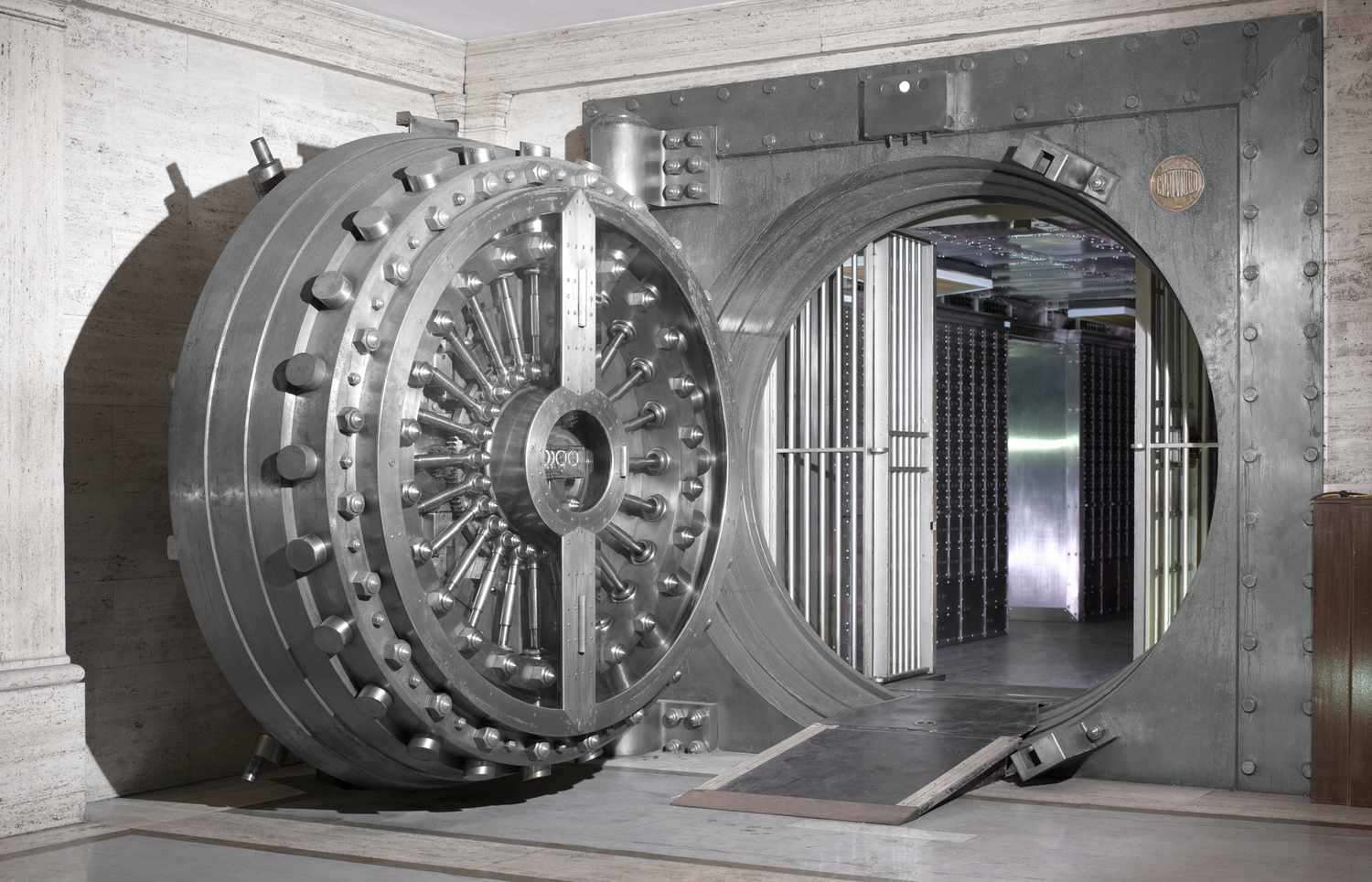Introduction
Commercial lending plays a crucial role in the growth and development of businesses. It provides the necessary financial resources for companies to expand their operations, invest in new equipment, acquire real estate, and meet their working capital needs. Whether it’s a small startup or a large corporation, commercial loans offer a flexible and accessible way to access funding.
Commercial lending, simply put, involves the lending of money to businesses for various purposes. Unlike consumer loans, which are typically obtained by individuals for personal use, commercial loans are specifically designed to support commercial activities. These loans are often issued by banks, financial institutions, and alternative lenders who specialize in catering to the unique needs of businesses.
The world of commercial lending encompasses a wide range of loan types, including term loans, lines of credit, SBA loans, equipment financing, commercial mortgages, and more. Each type serves a different purpose and comes with its own set of terms and conditions.
However, obtaining a commercial loan is not as simple as it may seem. Lenders scrutinize the creditworthiness and financial stability of businesses before approving a loan application. This is done to mitigate the risks associated with lending substantial amounts of money. Therefore, businesses need to understand the requirements and process involved in securing a commercial loan to increase their chances of success.
While commercial lending can be highly beneficial for businesses, it also carries certain risks. Businesses must carefully evaluate their financial capabilities and repayment capabilities before taking on debt. Failure to meet loan obligations can lead to severe consequences, such as damaged credit, lawsuits, and even business closure.
In this article, we will delve into the world of commercial lending, exploring its definition, types of loans available, the requirements to obtain a commercial loan, the process involved, and the benefits and risks associated with this form of financing. Additionally, we will provide some handy tips to help businesses navigate the commercial lending landscape successfully.
Definition of Commercial Lending
Commercial lending refers to the practice of lending money to businesses for various commercial purposes. It involves financial institutions, such as banks or alternative lenders, providing funding to businesses to support their operations, growth, and investment needs. Unlike consumer loans, which are intended for personal use, commercial loans are specifically tailored to address the unique financial requirements of businesses.
Commercial lending encompasses a wide range of loan products, each designed to serve different purposes. Some common types of commercial loans include:
- Term Loans: These are traditional loans with a specified repayment period. They are often used for financing long-term investments, such as purchasing equipment or expanding facilities.
- Lines of Credit: Business lines of credit provide access to a predetermined amount of funds that can be used as needed. Businesses can draw and repay funds as necessary, making this type of loan useful for managing working capital fluctuations.
- SBA Loans: The Small Business Administration (SBA) offers a variety of loan programs to support small businesses. These loans often come with favorable terms and conditions, making them an attractive option for entrepreneurs.
- Equipment Financing: This type of loan allows businesses to purchase or lease equipment necessary for their operations. The equipment itself serves as collateral, making it easier to secure funding.
- Commercial Mortgages: Similar to residential mortgages, commercial mortgages are used to finance the purchase of commercial properties, such as office buildings or retail spaces.
Commercial loans typically come with specific terms and conditions tailored to meet the needs of businesses. Interest rates, repayment schedules, and collateral requirements may vary depending on factors such as the borrower’s creditworthiness, the purpose of the loan, and the lender’s policies.
To qualify for a commercial loan, businesses often need to demonstrate their ability to repay the borrowed funds. Lenders assess factors such as the business’s financial statements, credit history, cash flow projections, and business plans to determine the borrower’s creditworthiness.
In summary, commercial lending involves financial institutions providing funding to businesses for various commercial purposes. From term loans to lines of credit and commercial mortgages, businesses have access to a range of loan options to support their growth and operational needs. Understanding the different types of commercial loans and the criteria lenders consider can help businesses navigate the lending landscape more effectively.
Types of Commercial Loans
Commercial loans come in several forms, each designed to serve different business needs. These loans offer flexible financing options to support various aspects of a business’s operations, expansion, and investments. Let’s take a closer look at some common types of commercial loans:
- Term Loans: Term loans are perhaps the most common type of commercial loan. With a specified repayment period, typically ranging from one to ten years, term loans provide businesses with a lump sum amount that can be used for a specific purpose, such as purchasing equipment, expanding facilities, or acquiring another business. The interest rates for term loans can be fixed or variable, depending on the agreement between the lender and borrower.
- Lines of Credit: Business lines of credit are flexible forms of financing that provide businesses with access to a pre-approved amount of funds. Similar to a credit card, businesses can borrow and repay funds as needed, making them ideal for managing cash flow fluctuations or covering unexpected expenses. Interest is only charged on the amount borrowed, not the entire credit line.
- Commercial Mortgages: Much like residential mortgages, commercial mortgages are used to finance the purchase of commercial properties, including office buildings, retail spaces, or industrial facilities. Commercial mortgages typically have more stringent eligibility requirements and longer repayment periods compared to other types of loans. The property being purchased serves as collateral for the loan.
- SBA Loans: The Small Business Administration (SBA) offers a range of loan programs to support small businesses. These loans are partially guaranteed by the SBA, which enables lenders to offer more favorable terms and conditions. SBA loans can be used for various purposes, such as starting a business, purchasing equipment, or expanding operations.
- Equipment Financing: This type of loan is specifically designed to facilitate the purchase or leasing of equipment necessary for business operations. The equipment being financed serves as collateral, making it easier for businesses to secure funding. Equipment financing loans typically have lower interest rates than unsecured loans, and the terms can be customized based on the expected lifespan of the equipment.
These are just a few examples of commercial loans available to businesses. Other types include construction loans, inventory financing, and trade financing, each catering to specific business needs. The specific terms and conditions of these loans, such as interest rates, repayment periods, and eligibility criteria, may vary depending on the lender and the financial profile of the borrower.
Understanding the different types of commercial loans allows businesses to choose the most suitable option based on their specific needs. Working with a trusted financial advisor or lender can help businesses navigate the options and identify the best financing solution for their unique circumstances.
Commercial Loan Requirements
Obtaining a commercial loan requires businesses to meet certain requirements set by lenders. These requirements help assess the creditworthiness and financial stability of the borrowing entity. While the specific requirements may vary among lenders, here are some common factors that most lenders consider when evaluating commercial loan applications:
- Credit History: Lenders review the credit history of the business, as well as the personal credit history of the business owners. A strong credit history demonstrates a track record of responsible credit management, increasing the chances of loan approval. On the other hand, a poor credit history may lead to loan rejection or less favorable terms.
- Financial Statements: Lenders typically require businesses to provide detailed financial statements, including income statements, balance sheets, and cash flow statements. These documents help assess the financial health and viability of the business, including its ability to generate sufficient cash flow to repay the loan.
- Business Plan: A well-developed and comprehensive business plan provides lenders with insights into the goals, strategies, and market potential of the business. The business plan should outline the purpose of the commercial loan and how it will contribute to the growth and success of the company.
- Collateral: Many commercial loans may require collateral to secure the loan. Collateral can take the form of real estate, equipment, inventory, or other business assets. Lenders use collateral as a means to mitigate risk, as it provides them with an alternative source of repayment should the borrower default on the loan.
- Industry Experience: Lenders may consider the industry experience of the business owners or management team. Experience in the industry demonstrates a deeper understanding of the business’s unique challenges and increases the confidence of the lender in the borrower’s ability to succeed.
- Loan-to-Value Ratio: For commercial real estate loans, lenders assess the loan-to-value ratio (LTV), which compares the loan amount to the appraised value of the property. Lenders typically prefer a lower LTV ratio, as it reduces their risk exposure.
It’s important for businesses to prepare and organize these documents before applying for a commercial loan. Additionally, maintaining a good credit history, demonstrating steady cash flow, and having a clear repayment plan can significantly improve the chances of loan approval.
Working with a knowledgeable loan officer or financial advisor can provide valuable guidance on the specific requirements of lenders and help businesses navigate the loan application process more effectively. By understanding and fulfilling the required criteria, businesses can enhance their chances of securing the commercial financing they need to support their growth and success.
Process of Obtaining a Commercial Loan
Obtaining a commercial loan involves a series of steps that businesses must navigate to secure the funding they need. While the process may vary slightly depending on the lender and the specific loan requirements, here is a general overview of the steps involved in obtaining a commercial loan:
- Assessing Financing Needs: The first step is for businesses to assess their financing needs and determine the purpose of the loan. This involves evaluating the amount of funding required, the repayment terms, and the desired timeframe for obtaining the loan.
- Gathering Required Documents: Businesses need to gather the necessary documents to support their loan application. This may include financial statements, tax returns, business plans, bank statements, and other relevant documents specified by the lender.
- Researching Lenders: Businesses should research and identify lenders who offer commercial loans that align with their specific needs. It’s important to consider factors such as interest rates, terms and conditions, eligibility requirements, and the lender’s reputation and track record.
- Preparing the Loan Application: Businesses must complete the loan application, providing accurate and detailed information about the company, its financial history, and the purpose of the loan. This includes disclosing financial figures such as revenue, expenses, and existing debt obligations.
- Submitting the Application: Once the loan application is complete, it can be submitted to the chosen lender for review. It’s crucial to ensure that all required documents are included with the application to avoid delays or rejections.
- Loan Evaluation and Underwriting: The lender evaluates the loan application and verifies the provided information. This may involve conducting a credit check, reviewing financial statements, and assessing the collateral offered. Underwriters review the application to determine the borrower’s creditworthiness and the potential risks associated with approving the loan.
- Loan Approval and Terms Negotiation: If the loan application meets the lender’s requirements and is approved, the lender will provide the borrower with the loan offer. At this stage, the borrower has the opportunity to negotiate the terms, including interest rates, repayment periods, and any other conditions that may be negotiable.
- Closing the Loan: Once the terms are agreed upon, the loan closing process begins. This involves fulfilling any remaining conditions, such as providing additional documents, finalizing legal and financial documentation, and executing the loan agreement. The borrower may also be required to pay closing costs and fees associated with the loan.
- Repayment and Review: After the loan is closed, the borrower must adhere to the agreed-upon repayment terms. It’s important to carefully review the loan agreement, including the repayment schedule, interest rate, and any associated fees. Regular and timely repayments will maintain a positive credit history and improve future borrowing prospects.
Throughout the process, maintaining open communication with the lender and promptly responding to any requests for additional information or documentation is crucial. Working closely with a trusted financial advisor or loan officer can also provide valuable guidance and support throughout the loan application process.
By following these steps and ensuring preparedness, businesses can increase their chances of securing a commercial loan and obtain the necessary financing to support their growth and success.
Benefits and Risks of Commercial Lending
Commercial lending offers businesses several benefits that can help drive growth and support their operations. However, it is important to be aware of the associated risks. Let’s explore the benefits and risks of commercial lending:
Benefits of Commercial Lending:
- Access to Capital: Commercial lending provides businesses with the necessary capital to fund expansion, invest in new equipment, hire employees, or meet working capital needs. By accessing funds through a commercial loan, businesses can seize growth opportunities and enhance their competitiveness.
- Flexible Financing Options: Commercial loans come in various forms, allowing businesses to choose the type of financing that best suits their specific needs. Whether it’s a term loan, line of credit, or equipment financing, businesses can find a loan option that aligns with their goals and cash flow requirements.
- Opportunity for Business Development: Commercial lending enables businesses to invest in infrastructure, technology, and human resources necessary for growth. With adequate funding, businesses can innovate, expand into new markets, and enhance their operational efficiency.
- Tax Benefits: In certain cases, the interest paid on commercial loans can be tax-deductible, reducing the overall tax burden for businesses. This can provide significant savings and improve the financial health of the company.
- Building Credit History: Successfully managing and repaying commercial loans can help businesses establish or improve their credit history. This, in turn, can increase their future borrowing capacity and improve their relationships with lenders.
Risks of Commercial Lending:
- Debt Burden: Taking on debt through commercial loans creates obligations for businesses to repay the borrowed funds. If businesses face financial challenges, such as unexpected market shifts or economic downturns, they may struggle to meet loan obligations and potentially experience financial distress.
- Interest Rates and Fees: Commercial loans often come with interest rates and fees, which can impact the overall cost of borrowing. Higher interest rates or unfavorable loan terms can increase the financial burden on businesses, affecting their profitability and cash flow.
- Collateral Requirement: Many commercial loans require businesses to provide collateral, such as assets or property, as security for the loan. In the event of default, the lender has the right to seize the collateral, potentially leading to the loss of valuable assets.
- Market Volatility: Business success and loan repayment can be influenced by external factors such as changes in the market or industry. Economic downturns, industry disruptions, or shifts in consumer behavior can impact the revenue and profitability of businesses, making it more challenging to meet loan obligations.
- Restrictions on Business Decisions: Some commercial loans may come with covenants or conditions that restrict certain business decisions or require lender approval. This can limit the flexibility and autonomy businesses have in managing their operations.
It’s important for businesses to carefully evaluate the benefits and risks of commercial lending and weigh them against their specific circumstances. Conducting thorough financial analysis, assessing cash flow projections, and seeking professional advice can help businesses make informed decisions when it comes to acquiring commercial loans.
Ultimately, commercial lending can be a valuable tool for businesses, but it should be approached with caution and careful consideration of the risks involved.
Tips for Successful Commercial Lending
Securing a commercial loan can be a critical step for businesses looking to expand, invest, or meet their financial needs. To increase the chances of a successful loan application and ensure a favorable borrowing experience, consider the following tips:
- Understand Your Financing Needs: Before approaching lenders, thoroughly assess your financing needs. Understand how much capital you require, the purpose of the loan, and how it will contribute to your business’s growth. This clarity will help you select the most suitable loan product and communicate your needs effectively to lenders.
- Maintain Good Creditworthiness: A strong credit history is crucial for obtaining favorable loan terms. Pay your bills and debts on time, keep your credit utilization low, and regularly review your credit report for accuracy. If your credit history needs improvement, take steps to address any issues before applying for a loan.
- Prepare a Comprehensive Loan Application: Be diligent in preparing your loan application. Provide accurate and up-to-date financial statements, tax returns, and other requested documents. Include a well-structured business plan that showcases your industry knowledge, competitive advantage, and growth strategy. A complete and thorough application demonstrates your professionalism and increases your credibility as a borrower.
- Develop Strong Relationships with Lenders: Cultivate relationships with potential lenders. Attend industry events, network with financial professionals, and seek recommendations from trusted sources. Building rapport with lenders can help you gain valuable insights into their lending criteria, enhance your loan application, and improve your chances of approval.
- Showcase Your Financial Stability: Lenders want to see that your business is financially stable and capable of repaying the loan. Provide solid evidence of consistent cash flow, reliable revenue streams, and a track record of profitability. Clear financial statements and accurate financial projections can help lenders gain confidence in your ability to repay the loan.
- Prepare for Collateral and Down Payments: If your loan requires collateral or a down payment, be prepared to offer assets or cash upfront. Understand the value of your collateral and ensure it aligns with the loan amount you’re seeking. If a down payment is required, plan for it in your financial projections to ensure you have the necessary funds available.
- Compare Loan Terms and Rates: Shop around and compare loan terms, interest rates, fees, and repayment options from different lenders. Seek multiple loan offers to ensure you’re getting the most competitive terms. Consider both the short-term and long-term financial implications of each loan offer to make an informed decision.
- Build a Strong Management Team: Lenders often consider the experience and competence of the management team when evaluating loan applications. Demonstrate a strong and experienced management team that is capable of successfully executing your business plan. Highlight key team members’ qualifications and industry expertise to instill confidence in lenders.
- Seek Expert Advice: Engage the services of a financial advisor or loan specialist who can guide you through the loan application process. They can provide valuable insights, help you analyze loan offers, and negotiate terms on your behalf. Their expertise can significantly increase your chances of securing a successful loan.
- Keep Communication Open: Maintain open and transparent communication with your lender throughout the loan process. Respond promptly to requests for additional information or documentation, and keep them informed of any significant business changes or challenges that may impact loan repayment. Strong communication builds trust and demonstrates your commitment to a successful lending relationship.
By following these tips, businesses can enhance their chances of securing a commercial loan and ensure a smoother borrowing experience. Careful preparation, strong financial management, and strategic decision-making will lay the foundation for successful commercial lending.
Conclusion
Commercial lending serves as a vital resource for businesses, providing access to the capital necessary for growth, expansion, and operational needs. Understanding the various types of commercial loans available, the requirements for obtaining a loan, and the benefits and risks involved are critical for businesses seeking financing. By following best practices and implementing the tips outlined in this article, businesses can increase their chances of securing a successful commercial loan:
Thoroughly assess your financing needs and select the most suitable loan product. Maintain a strong credit history and diligently prepare a comprehensive loan application. Cultivate relationships with lenders and showcase your financial stability. Compare loan offers to find the most favorable terms. Seek expert advice to guide you through the lending process.
While commercial lending offers numerous benefits, such as access to capital, flexible financing options, and opportunities for business development, there are also risks to be mindful of. Understanding and managing these risks, such as debt burden, interest rates, collateral requirements, and market volatility, is crucial for a successful borrowing experience.
In conclusion, commercial lending plays a significant role in supporting businesses of all sizes and industries. By navigating the lending landscape with knowledge, preparedness, and careful consideration of risks and benefits, businesses can secure the financing they need to thrive and achieve their goals.

























